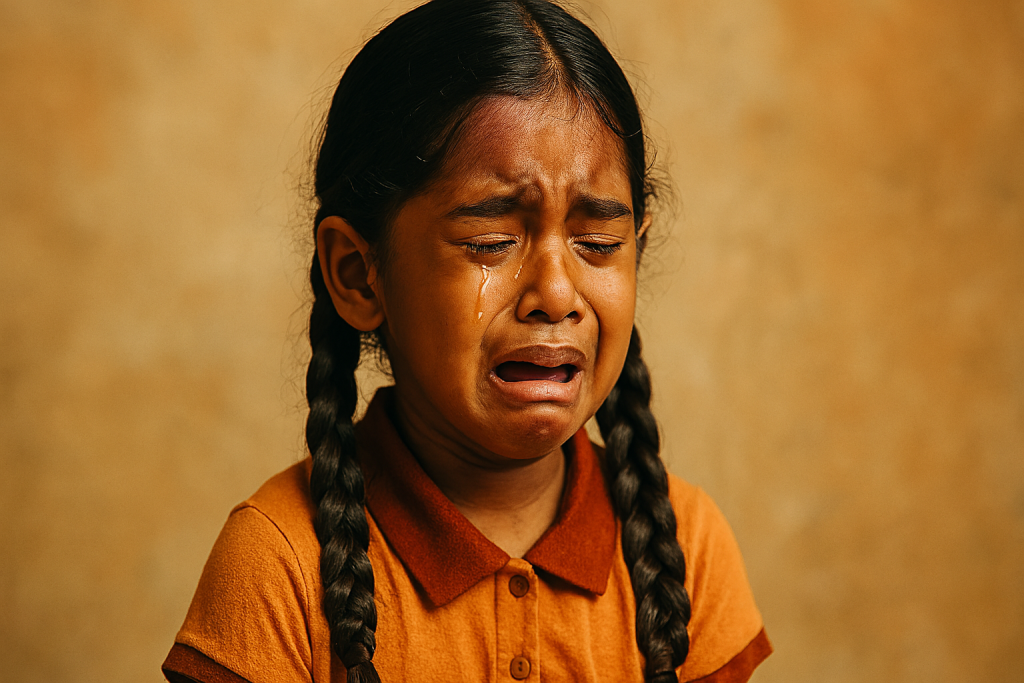When Healing Turns to Harm: The Grim Face of Medical Negligence in Kerala
In a disturbing case that has shaken Kerala’s conscience, a nine-year-old girl from Pallassana in Palakkad lost her right forearm due to alleged medical negligence. What began as a simple fracture ended in an unthinkable tragedy—a young child maimed for life because a system meant to heal instead turned careless, complacent, and cruelly indifferent.
This is not an isolated incident. It reflects a deeper rot within sections of Kerala’s public healthcare machinery, one that seems to repeatedly fail the very citizens it swore to protect. The latest tragedy demands not just sympathy but swift, uncompromising justice—and this time, accountability must not be buried under bureaucratic whitewash.
The Horrific Sequence of Negligence
The nine-year-old’s story reads like a nightmare of neglect. The child fractured her arm while playing and was taken to the Palakkad District Hospital. Doctors, after conducting an X-ray, identified two fractures and sent her home after applying a plaster cast. When the girl cried out in unbearable pain and her fingers began to discolor, her distressed mother returned to the hospital seeking help. Instead of investigating further, doctors reportedly dismissed the concerns as “normal pain” and sent the child away again.
By the time the parents rushed her to Kozhikode Medical College, it was too late. Doctors there informed the family that amputation was the only option left—the blood supply to the limb had been completely cut off due to improper treatment and delayed intervention. A harmless childhood injury had been allowed to spiral into a life-altering catastrophe.
The mother’s anguished statement says it all: “Had the doctors at district hospital examined her properly when we went the second day complaining of severe pain, my daughter’s arm could have been saved.”
A Disturbing Pattern of Negligence
Sadly, this case is far from isolated. Across Kerala, a series of recent disturbing medical negligence incidents expose systemic loopholes and a shocking lack of accountability, often leaving patients to suffer permanent damage or death.
In Alappuzha Medical College Hospital, a 58-year-old woman had two toes amputated without her or her family’s consent during surgery for a diabetic foot infection. The patient was shocked to learn about the amputation only the following day, prompting complaints and an expert committee probe. Authorities denied negligence, citing severe infection and poor circulation as the cause.
In another tragic instance, an elderly woman succumbed to rabies despite treatment, after a chain of inadequate medical care exposed fatal gaps in timely intervention.
At Thiruvananthapuram’s General Hospital, a surgical guide wire was left inside a woman’s chest for more than two years following thyroid surgery, only discovered after she developed serious complications. The surgeon later admitted the mistake, but the patient continues to suffer long-term health effects.
Similarly, in Kozhikode Medical College, a surgical instrument was left inside a woman’s abdomen after a C-section in 2017. The error remained undetected until 2022, sparking protests and fierce demands for justice.
These cases, together with the harrowing loss of a young girl’s arm in Palakkad, reveal a pattern of repeated avoidable medical harm inflicted on vulnerable patients who depend on the public health system for care.
The Hollow Comfort of “Expert Committees”
What faith can the public have when the recurring response to such incidents is the formation of “expert committees”—often composed of members from the same system being accused? Experience suggests these committees frequently shield the medical establishment rather than serve victims’ interests.
Kerala’s people deserve more than placatory reports written to absolve negligence. The judiciary must intervene decisively to ensure an independent, transparent, and judicially monitored investigation comprising external medical, legal, and human rights experts. Only this can restore public trust and deliver real justice.
A Call for National and International Intervention
The loss of a child’s limb to preventable medical negligence is a grave violation of human and children’s rights. India’s National Commission for Protection of Child Rights (NCPCR) must urgently intervene, enforcing accountability and ensuring victim rehabilitation. International child rights organizations and medical ethics watchdogs should also spotlight these failings.
No child should suffer lifelong disability from a treatable injury due to a system’s incompetence. No parent should endure such cruel helplessness. These failures demand global attention and action.
Time for the Judiciary to Act
Justice delayed in such cases is justice denied—and worse, justice mocked. The Kerala High Court must take suo motu cognizance, demand compensation, and establish strict judicial oversight over investigations. All responsible parties—doctors, administrators, and oversight bodies—must face criminal and professional consequences.
Healthcare negligence cannot be brushed aside behind white coats and procedural excuses. Behind every incident lies immeasurable human pain. A child will grow up without an arm, a woman lost toes without consent, others live with foreign objects inside them—all scars of a broken system.
The judiciary must act where the medical establishment has failed, ensuring these tragedies ignite systemic reform rather than fading into forgetfulness. Only then can Kerala reclaim its moral standing in public healthcare.
“The negligence to be established must be culpable or gross and not merely based upon an error of judgment. A medical practitioner is not liable simply because a treatment did not succeed or because there was a difference in medical opinion. The doctor must exercise the degree of skill and care that is reasonably expected of a competent professional in that field. Even death or an unfavorable outcome cannot be considered medical negligence per se unless there is proof that the medical treatment fell below accepted standards or involved gross carelessness.”
— Supreme Court of India
This legal distinction, while important for protecting genuine medical judgment, has often become a loophole by which doctors escape accountability in clear cases of medical negligence, leaving victims and their families without justice or adequate redress.
The future that now lies ahead for this little girl is daunting and filled with challenges far beyond her years. The loss of a limb in childhood brings not just physical limitations, but also deep psychological wounds—she may struggle with anxiety, depression, lowered self-esteem, and social isolation as she copes with a dramatically altered body image and the many barriers to independence her disability will bring. Daily activities that once seemed effortless will require constant adaptation, and her journey through school, friendships, and even play will inevitably be marked by both emotional and practical hurdles.
What support system will be put in place for her rehabilitation—physical, psychological, and social? Will she have access to quality prosthetics, counseling, and educational accommodation? Who will address the trauma inflicted on her young mind, and how will her family be supported through their own anguish and sense of loss? Will society take responsibility beyond financial compensation to ensure she’s not merely a statistic in another report, but a child whose full potential is fiercely protected?
Above all, will this tragedy serve as the catalyst for systemic reforms and true accountability—or will the suffering of this little girl, like so many before her, simply fade from public memory with nothing learned and nothing changed?
When Healing Turns to Harm: The Grim Face of Medical Negligence in Kerala Read More »










